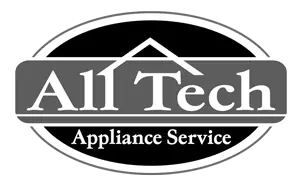It’s Getting Hot in Here: What to Do When the Freezer Works But Fridge Doesn’t
It’s the middle of a hot summer night. An ice cold drink sounds heavenly.You grab a couple of ice cubes from the freezer then reach into the fridge for the pitcher of tea. It’s warm.Actually, all of your items are warm. The butter, the milk, the eggs — all warm. You look at the ice cubes, then at your half-melted butter.
How long can it last? Do you throw it all away?
Your brain clicks into overdrive. How does this happen? How can one half of your refrigerator work, but not the other half? Better question — how do you fix this?
Staring at nonworking refrigerator is no fun. Read on to learn what to do when the freezer works but fridge doesn’t.
Food Safety First
Use a thermometer to determine if food in your nonworking fridge or freezer is safe. Eat refrigerated or frozen proteins such as meat, poultry, fish, or eggs while they are still at safe temperatures (40F). Thoroughly cook all food to a safe minimum internal temperature. If the food was above 40º F for 2 hours or more, discard it. If it is very warm (90 F), discard food after 1 hour. Check each package of food for condition and safety.
As long as the doors remain closed, you should have 4 hours before needing to discard items. Full freezers can last even longer. If the freezer thermometer reads 40° F or below, the food is safe and may be refrozen. Do not depend on the looks or smell of food to determine spoilage. Frozen food that still contains ice crystals and is in the safe temperature zone may be refrozen or cooked. Refrigerated food should be safe as long as 4 hours after the cooling stops as long as the door is kept closed.
You may need to move refrigerated items to an ice chest or alternative storage. If the core temperatures of items have not reached 40F, you may be able to avoid discarding them. Otherwise, cook and use them while they are still in the safe temperature zone.
Percussive Maintenance Is Not The Answer
A sudden appliance breakdown is frustrating. Hitting or kicking your refrigerator to “restart the compressor” is not going to work any better than talking to it sternly. Try these basic steps before you call for repairs.
1. Check the Outlet
If one part is cold, but the other isn’t, check that the unit has power. Often, one section will remain colder much longer than the other. Plug something else into the outlet to see if the fridge is getting power.
2. Check the Electrical Cord
If the outlet works, plug in the fridge. Does the light go on when you open it? You may have a problem with the cord.
3. Check the Compressor
If you cycle power off and then back on again, you should hear/feel the compressor make a steady noise or hum. If it makes noise and there is no cooling going on, it could be the overload/relay, thermostats or wiring.
4. Adjust the Thermostat
Do the compressor and fan click on? Is it making any sounds?
5. Check the Temperature
If the freezer is cold, the thermostat is set and there is cold air, but the refrigerator still isn’t cold, check the liner and door for leaks. A loose or missing seal can make all the difference. Close the door on a dollar bill. If you can slide it through, the seal needs cleaning or replacement.
With a little luck, you can troubleshoot or diagnose your problem before calling in a professional. Some repairs should only be attempted by a professional. Due to environmental concerns, recharging your own refrigerant is no longer acceptable.
How to Avoid “Freezer Works But Fridge Doesn’t” Emergency Repair Calls
Regular refrigerator maintenance can help you avoid spoiled food and unfortunate surprises.
1. Clean the Refrigerator Often
Use a mild baking soda and water solution. A few drops of dish soap can help dissolve stubborn messes. Grease and sticky stuff can get caught in seals and vents. Improper air circulation or bad seals waste energy. This causes your fridge to work harder than it needs to.
2. Clean the Coils Twice a Year
Dusty condenser coils don’t exchange heat easily and make your refrigerator work harder. Pull the unit away from the wall if the coils are in the back or look underneath the grille in the front. If your refrigerator has a condenser fan, give it a good cleaning too. Unplug the machine and use your vacuum brush to gently remove the dust.
3. Set the Temperature to 38 F (Fridge) and 0 F (Freezer)
Keep the fridge and freezer about 3/4 full. Refrigerators need thermal mass to retain temperature, so keep jugs of water in your fridge or freezer if you don’t tend to keep it full. Don’t pack the compartments full. Air needs to circulate for maximum efficiency.
4. Listen to Your Fridge
Loud noises, constant buzzing, dripping or popping sounds indicate a problem. Make a repair call before it becomes an emergency.
5. Change the Filters
If your refrigerator is equipped with a water dispenser or ice maker with water filter, the filter should be changed regularly. Excess pressure can build up when the filter is full of sediment. This can make noises or leak all over your kitchen. Follow these tips to avoid expensive emergency calls. Many refrigerator service technicians also offer a regular maintenance program to help you keep your refrigerator in top condition.
Ask Our Experts
When your refrigerator is making odd cheeping sound, showing mystery codes on its display, or even the dreaded “freezer works but fridge doesn’t”, call us. We’ve built our reputation on guaranteed quality work, at a fair price. If it doesn’t make financial sense to repair a compressor or replace a fan motor, we will tell you.
Our owner/technician has 15 years of experience and our technician has 8 years of experience with all sorts of appliance repairs and maintenance. We provide regular appliance maintenance plans, repair services, and emergency repairs to Portland and the surrounding area.
Schedule an appointment today!


